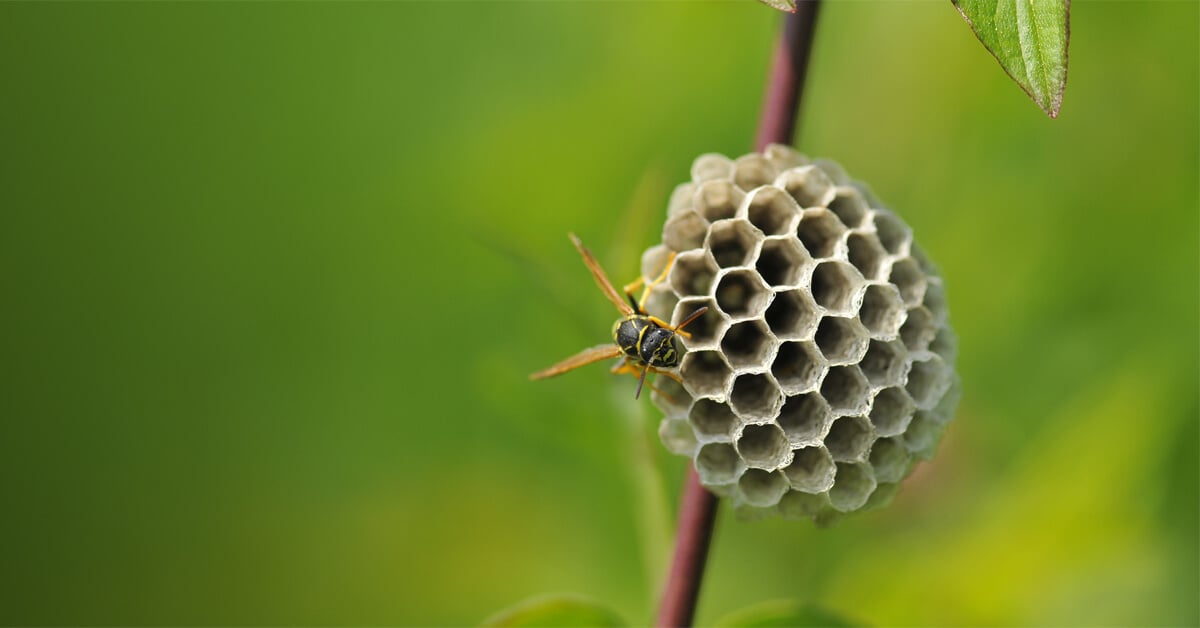HOW TO PREVENT WASPS

NJ, PA, MD and DE is home to a variety of stinging insects including bees, hornets, and wasps. Stinging insects not only cause pain to their victims but are responsible for sending over 500,000 people to the emergency room every year. Stings from these insects can be life threatening to people who are allergic or to anyone who is subjected to multiple stings all at once.
During the second half of summer into the early fall months, stinging insect colonies seek food supplies that they can bring back to their queens for survival during the winter month. You’ll see an abundance of stinging insects this time of year, increasing the risk of being stung. Most stinging insects are active during the day and return to their nests as it gets dark.
Identifying Bees and Wasps
Stinging insects are all similar in appearance, but it is possible to tell the difference:
Bumble bees – About 1/4 to 1 inch in size, bumble bees are black and yellow and fuzzy. They build nests in the ground or in grass clumps.
Carpenter bees – About 1/2 to 1 inch in size. They look a lot like a bumble bee, but instead of a fuzzy appearance, their abdomen is shiny and mostly bare. Carpenter bees bore into wooden surfaces and build galleries to raise their young. Female carpenter bees are capable of stinging, but rarely do so.
Honey bees – About 1/2 to 5/8 inch in size and range in color from a dark orange to brown or black. They live in colonies of 20,000 or more bees.
Baldfaced hornets – Mostly black and have a white face. They build their large nests in open areas, generally hanging from trees, poles, or other structures.
Yellow jackets – About 3/8 to 5/8 of an inch in size and have a yellow and black pattern. These pests build basketball sized nests near the ground or attached to bushes or structures.
Wasps – About 3/4 to 1 1/2 inches long, a wasp nest generally contains between five and 30 wasps.
How to Avoid Getting Stung by Stinging Insects
-
- If you’re drinking sweet beverages outside, use a wide open cup so you can see inside before you take a sip. Stinging insects are attracted to them and will fly inside – if you have a can or straw, you may not see the insect.
- Keep trash cans and food containers covered when not in use.
- Clean up and dispose of any fallen fruit from bushes and trees.
- Wear shoes on your feet while walking around outside, and for the best protection – wear close-toed shoes.
- Avoid bright colors and floral prints which can attract bees.
- If you notice hives or nests around your home, have them removed by a professional.
- If you have stinging insects flying around you do not swat at them as that can cause the insects to become aggressive and sting. Stay calm, and walk slowly away from the area. If you get stung and many insects start to swarm the area (bee stings release an odor that attracts other bees), cover your mouth and nose and leave the area quickly and try to get into a closed vehicle or building.
Call Viking at 800-618-2847 to learn more about stinging insect pest control and extermination services, or get a fast, free quote online today!











